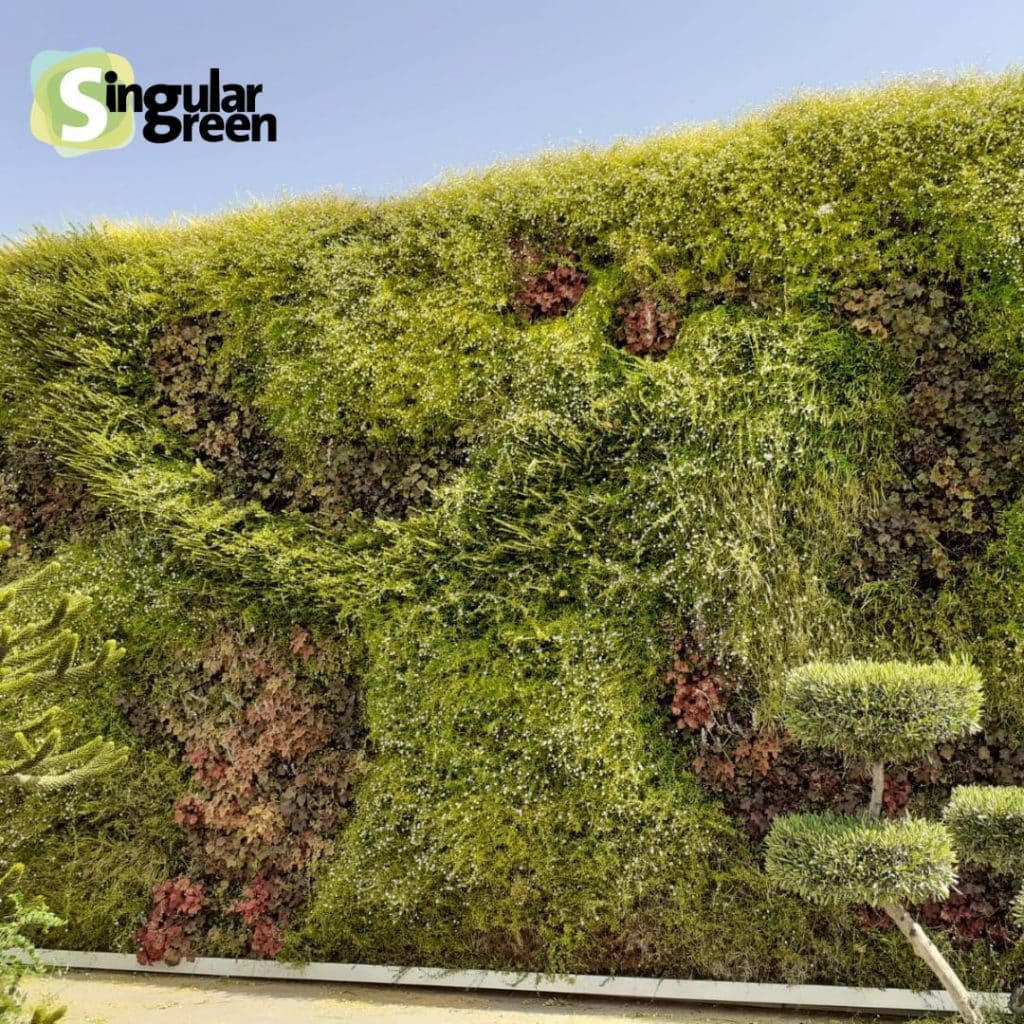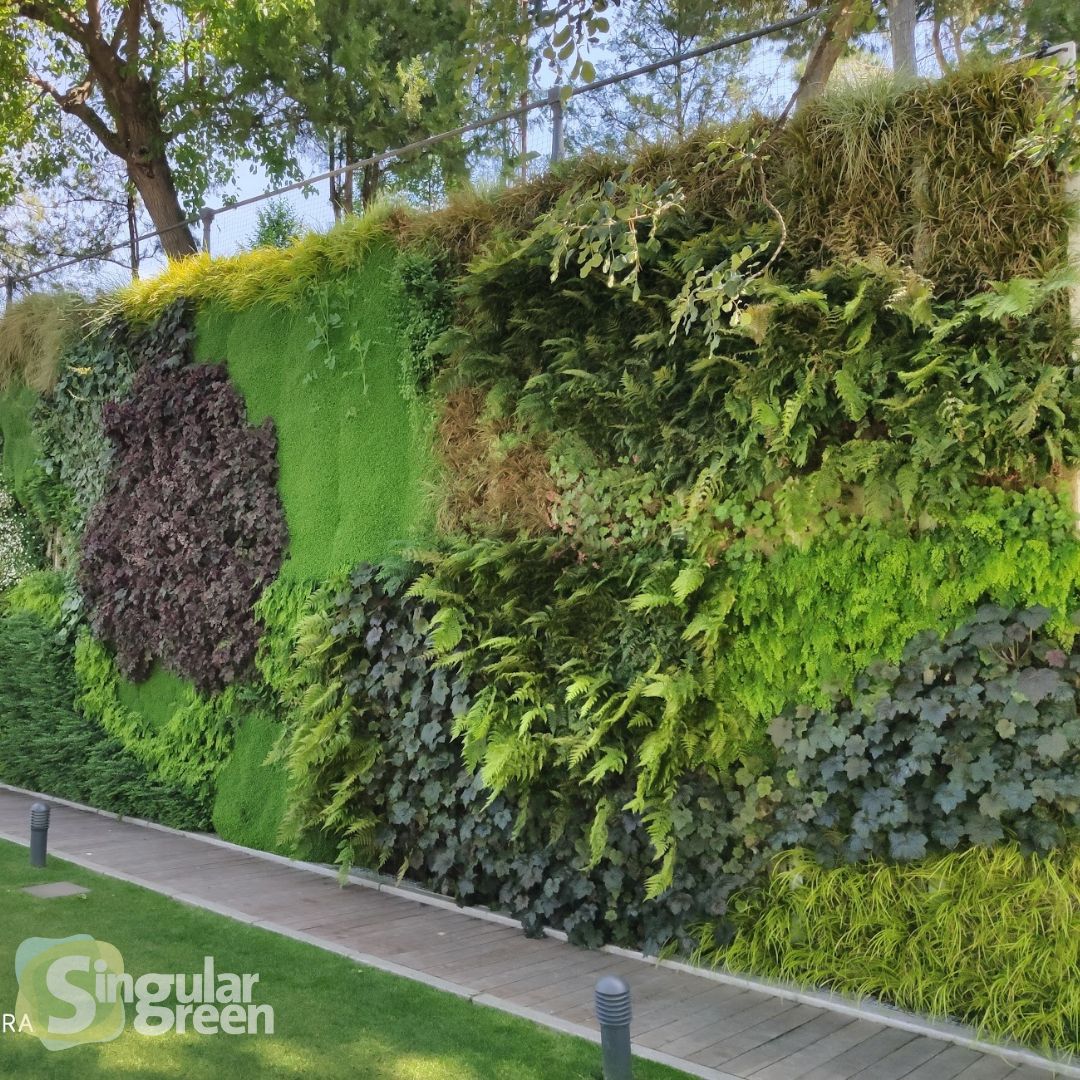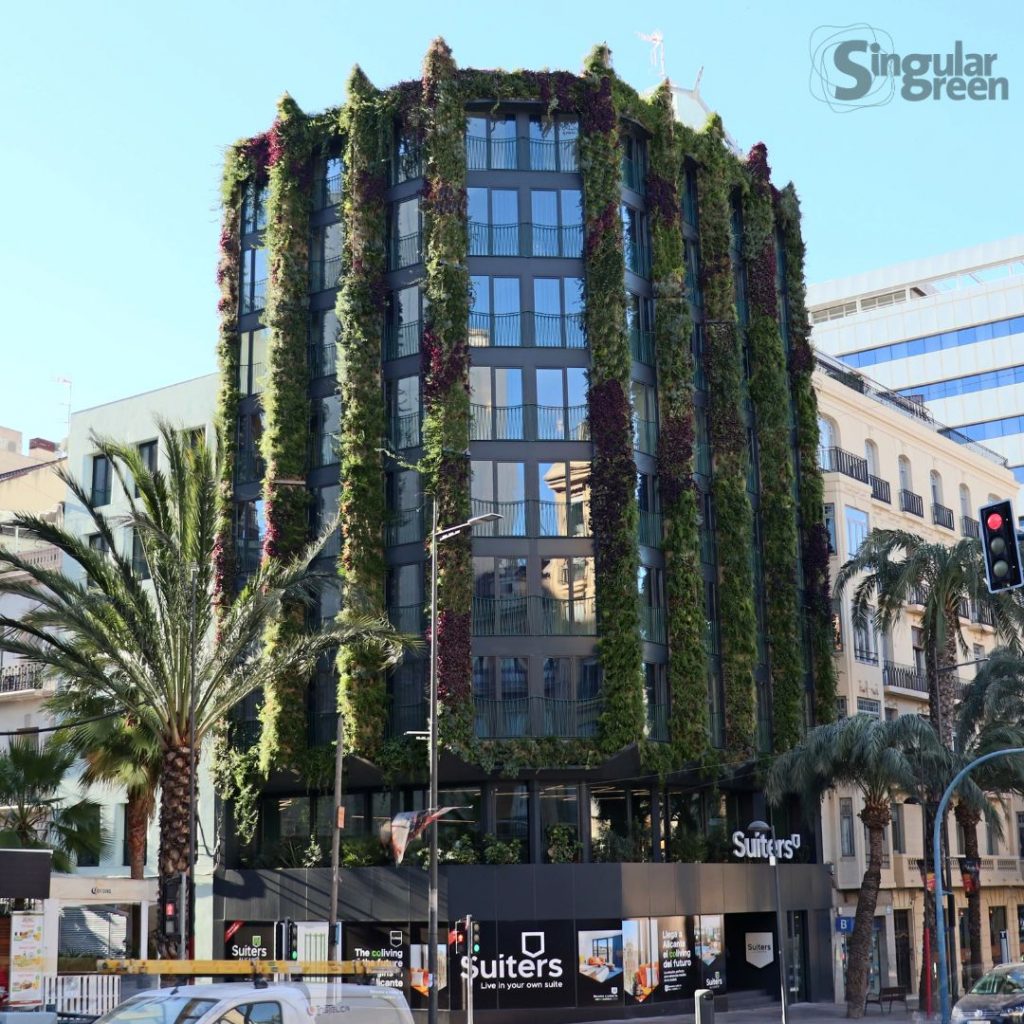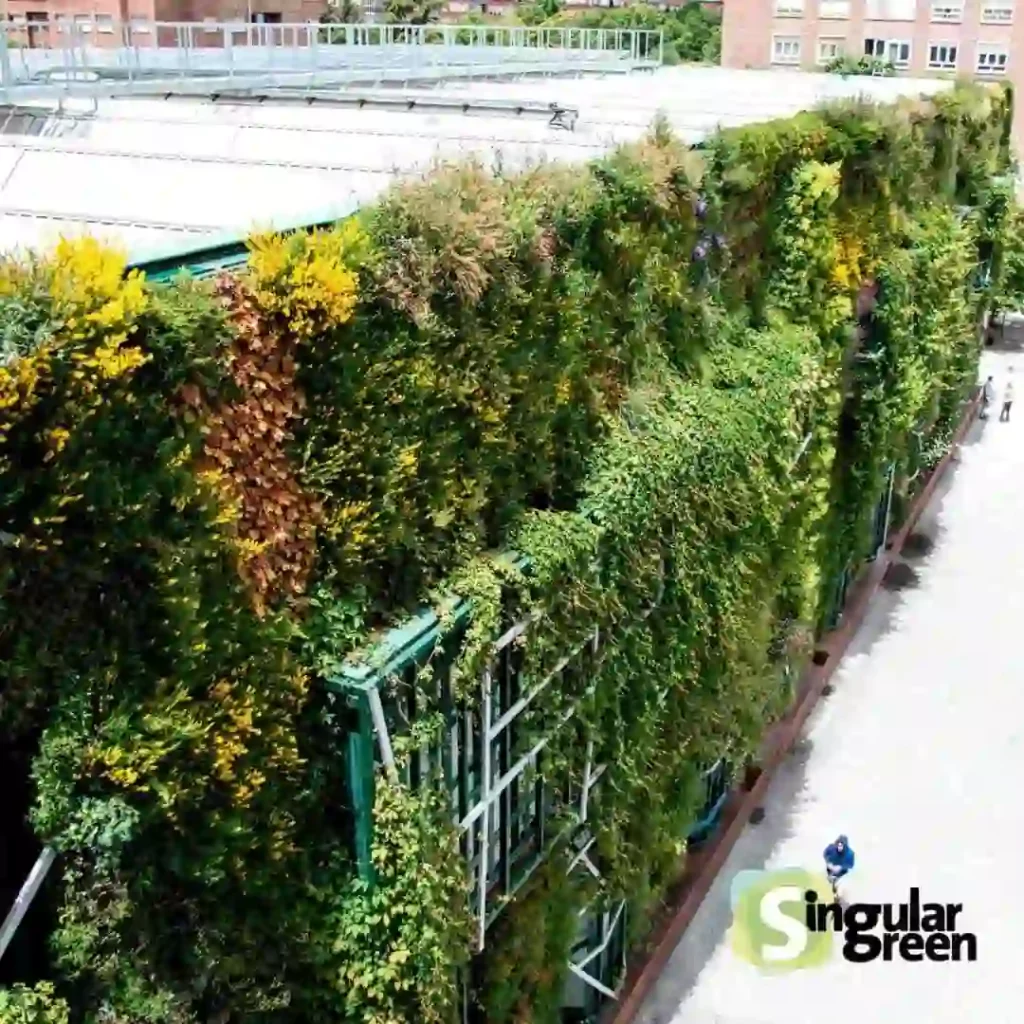Sustainable vertical gardens are an innovative solution that are designed considering not only beauty, but also resource efficiency, biodiversity and ecological integration.


In urban landscaping, vertical gardens have become an increasingly popular solution for reintegrating greenery into cities, offering not only visual respite but also significant environmental benefits.
However, not all vertical gardens are created equal.
The distinction between an ordinary and a sustainable vertical garden can have a profound impact not only on the immediate urban environment, but also on the long-term sustainability of urban gardening practices.
While ordinary vertical gardens may be designed primarily for aesthetic purposes, sustainable vertical gardens integrate ecological principles that maximise their environmental and social benefits.
Careful consideration of plant selection, design and maintenance is crucial to maximise their functionality and durability.
In this article, we will explore the key differences between these two types of vertical gardens, highlighting how sustainability transforms every aspect of the design, implementation and maintenance of these urban oases.
Through this comparison, we will see how sustainable vertical gardens not only beautify urban spaces but also contribute to building cities that are healthier, more resilient and harmonious with their natural environment.
Advantages of sustainable vertical gardens
Ecological benefits
Sustainable vertical gardens offer a number of significant ecological benefits to the urban environment. These include:
- Air purification, thanks to the ability of plants to absorb pollutants and release oxygen, contributing to improved air quality in cities.
- Temperature regulation, acting as a thermal insulator that helps to reduce the sensation of heat in densely populated urban areas.
- Humidification of facades, which helps to reduce pollution and the conservation of buildings by creating a microclimate conducive to the development of plants.
- Promotion of biodiversity by providing habitats for pollinating insects and small animals that contribute to the ecological balance of cities.
Economic benefits
Sustainable vertical gardens not only generate benefits for the environment, but also have a positive impact on the urban economy:
- They can mean considerable energy savingsby acting as natural insulators that reduce the need for heating in winter and cooling in summer.
- They increase the value of buildings by improving their energy efficiency and aesthetics, which in turn can translate into increased demand and property prices.
Social impact of vertical gardens
In addition to the ecological and economic benefits, sustainable vertical gardens have a positive impact on the well-being and quality of life of city dwellers, since they:
- They act as acoustic insulators, reducing noise coming from outside and creating quieter and more pleasant spaces for coexistence.
- They contribute to the creation of healthy environments by providing green areas that encourage relaxation, contact with nature and the practice of outdoor activities.
- They improve people’ s well-being by creating a visually attractive and harmonious environment, which can have positive effects on the mood and emotional health of the individuals who interact with them.
Implementing vertical gardens vs. sustainable vertical gardens in urban settings
Vertical gardens in urban environments require a careful implementation process.
1. Plant Selection:
Common Vertical Garden: Can include any type of plant, including exotic species that may require more resources such as water and nutrients, and may not be adapted to the local climate.
Sustainable Vertical Garden: Prioritise native plants or those adapted to the local climate. These plants tend to be more resistant to local pests and diseases, need less water and specific care, reducing the need for chemical inputs and conserving natural resources.
2. Use of Resources:
Common Vertical Garden: May use irrigation systems that do not optimise water use, and in some cases, use materials that are not environmentally friendly or recyclable for the structure and support.
Sustainable Vertical Garden: Implements efficient irrigation systems, such as drip irrigation or recycled rainwater systems, to minimise water consumption. The materials used are ecological, recyclable or recycled, reducing the environmental impact in construction and throughout its life cycle.
3. Diseño y Planificación:
Common Vertical Garden: The design may be primarily aesthetic, without necessarily considering environmental or energy efficiency aspects.
Sustainable Vertical Garden: The design is oriented not only to aesthetics but also to environmental functionality, such as improved air quality and thermal regulation. This is achieved through careful planning that considers solar orientation, natural ventilation and the thermal impact of the building.
4. Environmental Impact and Biodiversity:
Common Vertical Garden: Can have a neutral or even negative impact on local biodiversity if species are introduced that compete with the local flora.
Sustainable Vertical Garden: Promotes biodiversity by providing habitats for local species and promoting green corridors in urban environments. These gardens are designed to be part of a wider urban ecosystem, contributing positively to the local environment.


5. Materials and Life Cycle of Vertical Gardens
At Singulargreen, we understand that the sustainability of a vertical garden transcends its capacity to purify the air and create green spaces in urban environments.
It is also essential to consider the materials used in its construction and its complete life cycle.
That is why we are dedicated to selecting materials that are not only durable and resistant, but also recyclable or from sustainable sources.
Our commitment to the environment is reflected in the meticulous evaluation of every component of the vertical garden, from substrates to support and irrigation systems.
We seek solutions that minimise environmental impact throughout the life of the garden, including the dismantling and recycling phase.
In this way, we ensure that each vertical garden not only contributes to biodiversity and urban wellbeing during its operation, but also contributes to the circular economy, reducing waste generation and encouraging the reuse of materials.
This holistic view of the materials and life cycle of our vertical gardens is key to moving towards more sustainable cities that are conscious of the environmental legacy we leave for future generations.
6. Maintenance and Long Term Sustainability:
- Common Vertical Garden: May require intensive maintenance involving regular use of pesticides and chemical fertilisers.
- Sustainable Vertical Garden: Focuses on ecological maintenance, using organic methods for pest control and fertilisation. Long-term sustainability is a priority, ensuring that the garden will contribute positively to the environment for many years to come.
When designing and presenting a sustainable vertical garden, it is crucial to emphasise how these practices are not only beneficial to the environment, but also offer long-term economic advantages and improve the quality of life in urban areas.
Examples of cities with sustainable vertical gardens
Vertical gardens are revolutionising the concept of green spaces in urban environments and are increasingly being integrated into the infrastructure of cities around the world.
Barcelona and Madrid, for example, stand out for their progressive approach to urban sustainability, developing vertical gardens that not only transform the architectural landscape but also promote a healthier and more sustainable environment.
Integration in Urban Buildings
In cities such as Barcelona and Madrid, vertical gardens are not only an aesthetic component of modern architecture; they are fundamental to the redefinition of urbanism.
These vertical green spaces beautify facades, yes, but their impact goes beyond that: they significantly improve air quality and reduce urban heat islands, thus contributing to the general well-being of citizens.
The incorporation of these gardens into urban planning is a reflection of a growing trend towards the conscious integration of nature into contemporary architectural design.
Contribution to Urban Sustainability
The implementation of vertical gardens in Barcelona and Madrid has proven to be an effective strategy not only to visually beautify cities but also to address critical environmental problems such as pollution and biodiversity loss.
These gardens represent a tangible commitment to urban sustainability, inserting the vitality of nature into the heart of densely populated metropolises and highlighting the imperative need for accessible and functional green spaces.
Valuing Sustainable Vertical Gardens
The benefits of vertical gardens are indisputable for the creation of more sustainable and liveable urban environments.
It is crucial that more cities adopt this innovation to not only improve the quality of urban life but also to play an active role in protecting the environment.
This orientation towards sustainable vertical gardens not only inspires but also facilitates the creation of more sustainable and liveable urban environments.






